Volume 64, Issue 3
Displaying 1-4 of 4 articles from this issue
- |<
- <
- 1
- >
- >|
-
2023 Volume 64 Issue 3 Pages 73-76
Published: 2023
Released on J-STAGE: August 31, 2023
Download PDF (227K) -
2023 Volume 64 Issue 3 Pages 77-82
Published: 2023
Released on J-STAGE: August 31, 2023
Download PDF (345K) -
2023 Volume 64 Issue 3 Pages 83-85
Published: 2023
Released on J-STAGE: August 31, 2023
Download PDF (233K) -
2023 Volume 64 Issue 3 Pages 87-95
Published: 2023
Released on J-STAGE: August 31, 2023
Download PDF (382K)
- |<
- <
- 1
- >
- >|
